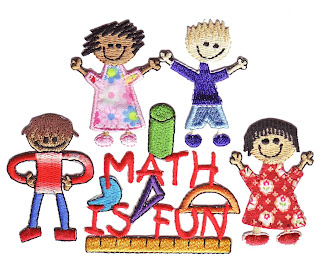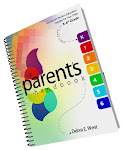Thursday, March 31, 2011
Wednesday, March 30, 2011
Building a Playground: Part 2
Raising the money
New play structures can be pricey, so your group should start fundraising right away. If your school's PTO provides funds for school projects, that's the first place to start. The fundraising committee for Stowe's playground project also solicited local businesses, conducted a direct mail appeal, ran a can and bottle drive, organized a benefit concert, and threw a fund-raising dance that included a silent auction and raffle.
Along with community support, look for grants: For more grant-writing tips, go to the Peaceful Playgrounds website (look especially for information on the Department of Education Physical Education Progress grants). Companies such as Lowe's and State Farm Insurance provide playground construction grants. Or approach playground vendors directly and ask if they offer donations or discounts. For online fundraising, try DonorsChoose.org, which provides a platform to describe your project and an easy way for donors to contribute.
Creating a plan
Next, decide what the new playground will look like. Stowe’s group went straight to the source: They asked kids to describe their dream playground. Many asked for swings and slides, but some had more elaborate requests, including swimming pools, hot tubs -- and even a flying pig. Stowe's committee also surveyed staff, teachers, and parents and visited other schools for ideas. Based on input from the entire school community, they created a playground plan.
Posted by Unknown at 2:00 PM 0 comments
Labels: How to Get the Best Education Possible for Your Child, Tips for parents
Tuesday, March 29, 2011
Building a Playground: Part 1
School playgrounds: essential for learning
We know that play makes kids healthier, smarter and more creative. But tight budgets often make improving school playground equipment a low priority compared to hiring a teacher or buying supplies.
So what’s a parent to do? Do what Massachusetts mother Lisa Stowe did: Team up with other parents and teachers and do it yourself.
“The playground was sorry-looking,” Stowe recalls. The equipment came from a school that had closed down; parts of the structure were literally held together by duct tape and the swing sets were bent.
Stowe shares her blueprint for playground renovation – accomplished in a single school year.
Calling all parents!
Start by talking with your school’s administrators to get their support. The project may require school board approval, depending on the district. Next, recruit parent volunteers. Start now by sharing this article with five friends or teachers who you want to join your cause. Stowe made a presentation at her school’s fall picnic and passed around a sign-up sheet. You can also get the word out through your school's parent group, list serve, school newsletter, or just by calling other parents.
Twelve parents volunteered for Stowe's playground project. The group began meeting every two weeks and broke into three subgroups: a design group (to design the playground), a fundraising group, and a site group (to prepare the site and oversee installation). Their goal was ambitious: to raise $50,000 and complete the playground renovation by the end of the school year.
Tomorrow we will look at raising the money and creating a plan for the playground.
Posted by Unknown at 2:00 PM 0 comments
Labels: How to Get the Best Education Possible for Your Child, Tips for parents
Monday, March 28, 2011
For The Love of Books
Posted by Unknown at 2:00 PM 0 comments
Labels: How to Get the Best Education Possible for Your Child, Tips for parents
Sunday, March 27, 2011
Getting Enough Sleep Can Help You Lose Weight
Posted by Unknown at 2:00 PM 0 comments
Saturday, March 26, 2011
Milk Myths
Posted by Unknown at 2:00 PM 0 comments
Friday, March 25, 2011
Mind Versus Music
Posted by Unknown at 2:23 PM 0 comments
Labels: How to Get the Best Education Possible for Your Child, Tips for childrens' health
Thursday, March 24, 2011
Khan Academy
Khan Academy
The Khan Academy is an organization on a mission. We're a not-for-profit with the goal of changing education for the better by providing a free world-class education to anyone anywhere.
All of the site's resources are available to anyone. It doesn't matter if you are a student, teacher, home-schooler, principal, adult returning to the classroom after 20 years, or a friendly alien just trying to get a leg up in earthly biology. The Khan Academy's materials and resources are available to you completely free of charge.
How it works for students
Students can make use of our extensive video library, practice exercises, and assessments from any computer with access to the web. Coaches, parents, and teachers have unprecedented visibility into what their students are learning and doing on the Khan Academy.
It is truly worth your time! Just google Khan Academy or go to http://www.khanacademy.org/ .
Posted by Unknown at 2:00 PM 0 comments
Labels: How to Get the Best Education Possible for Your Child, Tips for parents
Wednesday, March 23, 2011
Math Activity: Part 2
1. Help start a discussion about the project from yesterday. If your child is having trouble explaining the purpose of his or her number, break it into steps. For example, “What is this a picture of?” (a ruler.) “When do we use rulers?” (To measure things.) “So what do the numbers tell us?” (How long.)
2. If your child is more advanced, you might have him or her write the question each number answers (e.g., “How much does it weigh?”), while less advanced children would record the number’s purpose in more general terms (e.g., “weight”).
3. Come together as a family and tell your child, “I’m going to tack up these cards. Let’s sort the pictures of the numbers by the way those numbers are used. I have some blank cards in case I need to make new ones.”
4. Invite each family member to share about his or her picture and then add it to the collection of pictures. As the members of the family describe their numbers, you might need to help them restate the purpose in order to fit the most appropriate category with the rest of the pictures.
5. Encourage you child to comment on the other pictures. If your child agrees with where the other family members place their pictures they can signal with a thumbs up. If the disagree, they should explain why.
Posted by Unknown at 2:00 PM 0 comments
Labels: How to Get the Best Education Possible for Your Child, Tips for parents
Tuesday, March 22, 2011
Math Activity: Part 1
Posted by Unknown at 2:00 PM 0 comments
Labels: How to Get the Best Education Possible for Your Child, Tips for parents
Monday, March 21, 2011
Is Your Child Ready For Kindergarten?
Posted by Unknown at 2:00 PM 0 comments
Labels: How to Get the Best Education Possible for Your Child, Tips for parents
Sunday, March 20, 2011
Ginger Can Assist In Your Workouts
Posted by Unknown at 2:00 PM 0 comments
Labels: Health and the family
Saturday, March 19, 2011
Sweet News For Dieters
Posted by Unknown at 12:02 PM 0 comments
Labels: Health and the family
Thursday, March 17, 2011
Get Organized: Part 5
Posted by Unknown at 2:00 PM 0 comments
Labels: Health and the family, Tips for parents
Wednesday, March 16, 2011
Get Organized: Part 4
Posted by Unknown at 2:00 PM 0 comments
Labels: Health and the family, Tips for parents
Tuesday, March 15, 2011
Get Organized: Part 3
Posted by Unknown at 2:00 PM 0 comments
Labels: Health and the family, Tips for parents
Monday, March 14, 2011
Get Organized: Part 2
Posted by Unknown at 2:00 PM 0 comments
Labels: Health and the family, Tips for parents
Sunday, March 13, 2011
Get Organized: Part 1
Posted by Unknown at 6:01 PM 0 comments
Labels: Health and the family, Tips for parents
Saturday, March 12, 2011
Kids and Asthma
Posted by Unknown at 2:00 PM 0 comments
Friday, March 11, 2011
Raising Resilient Kids
Posted by Unknown at 2:00 PM 0 comments
Labels: Health and the family, Tips for parents
Thursday, March 10, 2011
How To Motivate Our Children In Mathematics
Posted by Unknown at 2:00 PM 1 comments
Labels: How to Get the Best Education Possible for Your Child, Tips for parents
Wednesday, March 9, 2011
Loving Math?
Posted by Unknown at 2:00 PM 0 comments
Labels: How to Get the Best Education Possible for Your Child, Tips for parents
Tuesday, March 8, 2011
Is Your Child Being Bullied?
Posted by Unknown at 2:00 PM 0 comments
Labels: How to Get the Best Education Possible for Your Child, Tips for parents
Monday, March 7, 2011
10 Cool Facts About the Heart
Posted by Unknown at 2:23 PM 0 comments
Sunday, March 6, 2011
Diabetes: Are You At Risk?
1. A body mass index of 25 or highter (go to cdc.gov/bmi for a BMI calculator)
2. Exercising for fewer than 20 minutes three time per week
3. An immediate family member with diabetes
4. High blood pressure
5. Low HDL ("good") cholesteraol or high triglycerides
6. Polycystic ovary syndrome
7. Gestational diabetes, or giving birth to a baby weighing more than pounds
8. Being of African-American , American Indian, Hispanic, Asian-American, or Pacific Islander descent
Posted by Unknown at 2:00 PM 0 comments
Saturday, March 5, 2011
Eating Rights Can Help Prevent a Cold
Posted by Unknown at 2:00 PM 0 comments
Labels: Health and the family, Tips for parents
Friday, March 4, 2011
Parents Can Support Reading Skills
Parents want to help with reading, but sometimes barriers may exist:
-Long work days
-The ghost of their own school failures
-Insecurities with English
-Not knowing other parents or teachers at the school that can help
-The attitude that the teacher is the one expected to take care of school issues
-Parents not understanding how to use phonics and the only focusing on correcting of individual words, which discourages the child
What can parents do?
-Try seeing reading with new eyes
-Encourage your children as they discover how reading works
-Get read-alouds for your child which are available from the library
-If you don’t read English well, use emergent readers written in your home language
-Get comfortable meeting your child’s teacher and other parents
-Ask someone to go with you until you to any meetings until you are comfortable
Deborah Corpus and Ann Giddings suggest the following titles to help you as parents assist your children in having a lifelong love for reading.
Below are some favorite books that have help in working with parents and reading.
1. The Read-Aloud Handbook, By Jim Trelease
2. Raising Lifelong Learners: A Parent’s Guide, By Lucy Calkins
3. Reading Begins at Home, By Dorothy Butler and Marie Clay
4. The Partners’ Handbook, By Debby Charna and Wendy Rosush Reading at Home
Posted by Unknown at 2:00 PM 0 comments
Labels: How to Get the Best Education Possible for Your Child, Tips for parents
Thursday, March 3, 2011
Music Enriches Education
Posted by Unknown at 2:00 PM 0 comments
Labels: How to Get the Best Education Possible for Your Child, Tips for parents
Wednesday, March 2, 2011
Happy Birthday Dr. Seuss
March 2nd is "Read Across America Day". This day was started by the National Education Association in honor of Dr. Seuss's birthday. According to an article from PBS, here are ten tips for growing bookworms:
Posted by Unknown at 2:00 PM 0 comments
Labels: How to Get the Best Education Possible for Your Child, Tips for parents
Tuesday, March 1, 2011
ADHD: Part 2
Posted by Unknown at 2:00 PM 1 comments
Labels: Health and the family, Tips for parents






































